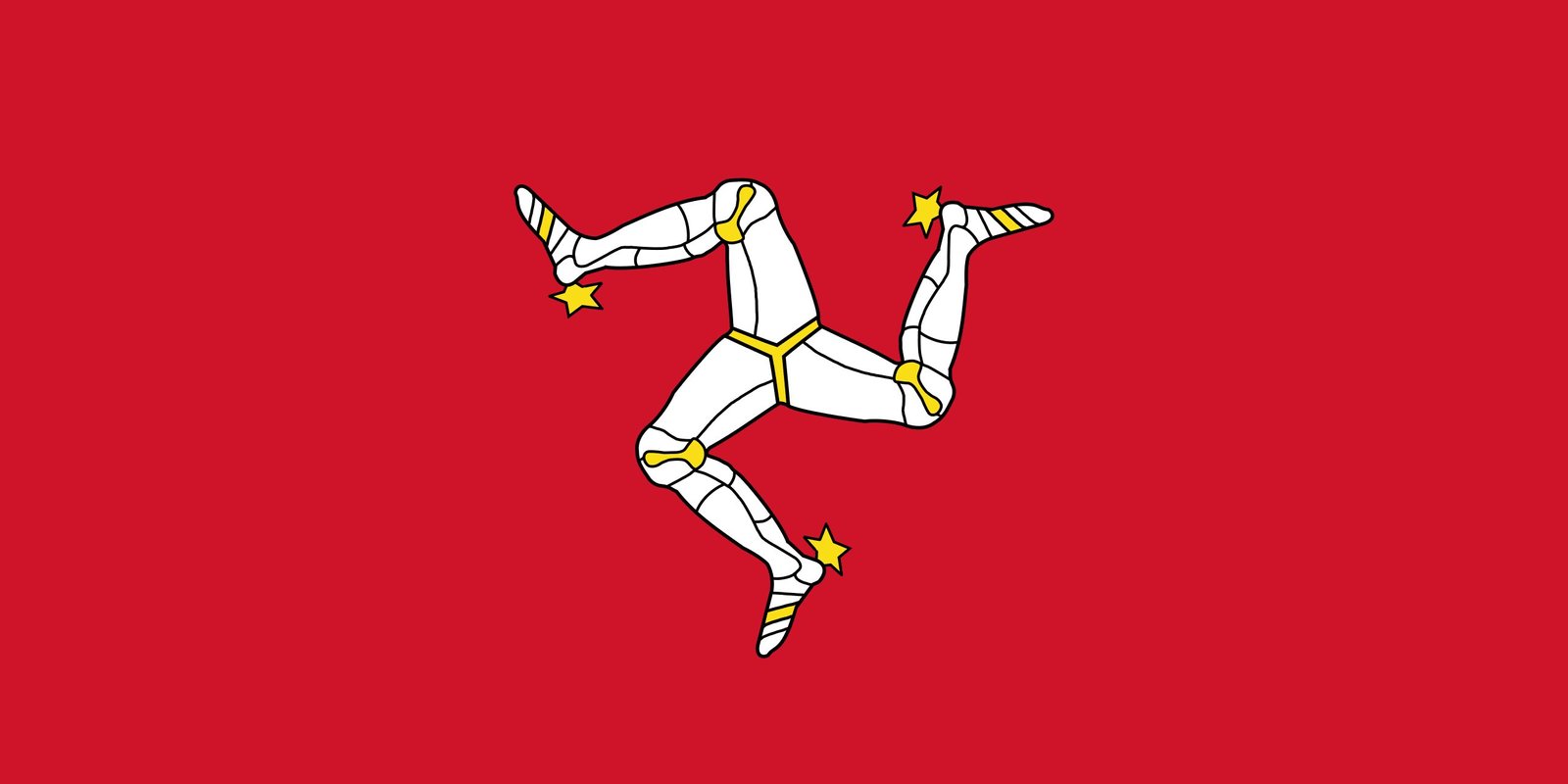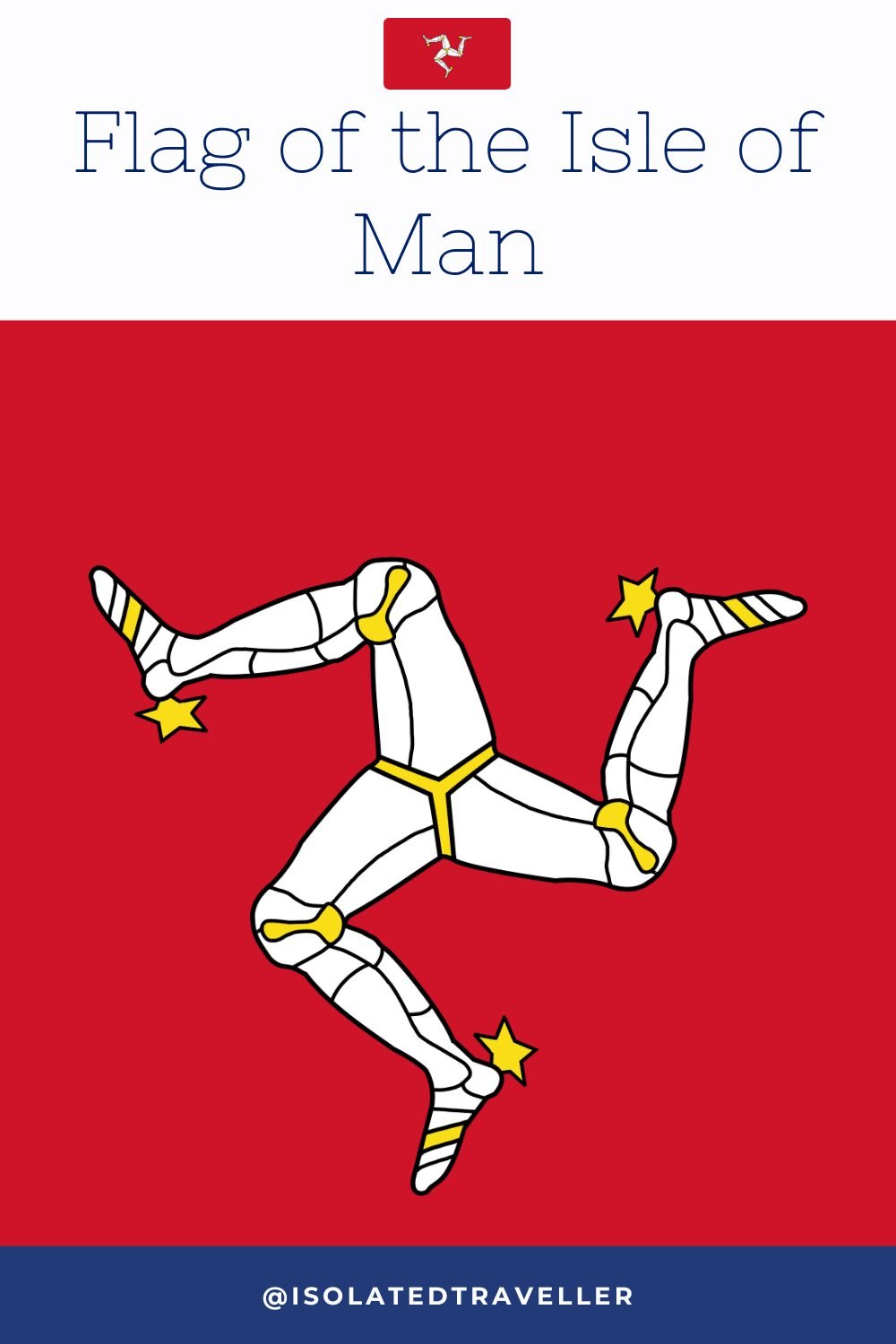Flag of the Isle of Man
The flag of the Isle of Man is a triskelion, also known as a triskele, consisting of three armoured legs with golden spurs, bent at the knee, conjoined at the thigh, and radiating from a central point at the top of the flag. The triskelion is typically depicted in yellow or gold on a red background. It is an ancient symbol that has been associated with the Isle of Man for centuries and is believed to represent the island’s Celtic heritage and its three historic divisions, known as sheadings. The flag of the Isle of Man is also known as the “Three Legs of Man” or simply the “Three Legs.”
The island’s motto, “whichever way you throw, it will stand,” is said to be represented by the three legs, which are arranged in a clockwise direction. The three legs support one another and are difficult to knock over.
The red background of the flag, which is similar in colour to the English flag, is thought to represent the island’s relationship with England. The triskelion, on the other hand, is thought to have Celtic origins and has served as the Isle of Man’s symbol for centuries.
The Isle of Man flag was officially adopted in 1932, but it had been in use for centuries before that. The flag is now widely recognized as a symbol of the island and is used in a variety of contexts, including government buildings, sporting events, and other official capacities.

History of the Flag of the Isle of Man
The rich political and cultural history of the Isle of Man is closely related to the flag’s centuries-old history.
The triskelion symbol appeared on the island for the first time in writing during the 13th century when the Norse-Gaelic kings of Man used it as a seal. Later used on coins and flags, the design was already well-known as a representation of Manx identity by the 19th century.
The current flag design was officially adopted in 1932, following a competition to design a new flag for the island. The winning design, which featured a red background with the triskelion symbol in the centre, was chosen from a pool of over 300 entries.
Since its inception, the flag has become an important symbol of Manx identity and pride, and it is used to represent the island and its people in a variety of contexts. In recent years, the flag has gained international recognition, appearing on everything from sports jerseys to music festival posters.
Flag Symbolism
- The triskelion is a motif that consists of three armoured legs or thighs, which are joined at the thigh and bent at the knee. The three legs are arranged in a clockwise direction and are said to represent the island’s motto, “whichever way you throw, it will stand”, as the three legs together support each other and cannot be easily knocked down.
- The red background of the flag is believed to represent the island’s relationship with England, as it is similar in colour to the English flag. It is also said to represent the island’s association with Ireland and Scotland, both of which have red their flags.
- The triskelion symbol itself is thought to have Celtic origins and has been used as a symbol of the Isle of Man for centuries. It is associated with the island’s Celtic heritage and the idea of the three elements of nature: land, sea, and air.


